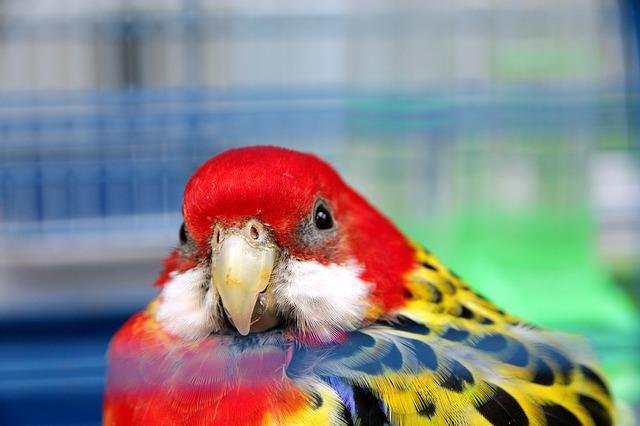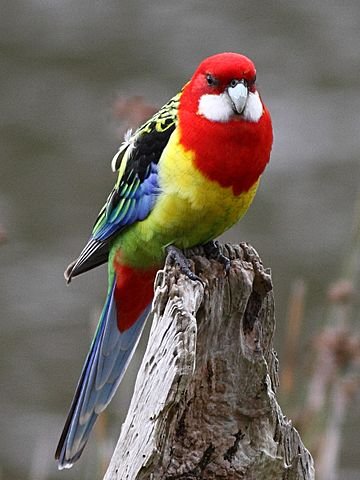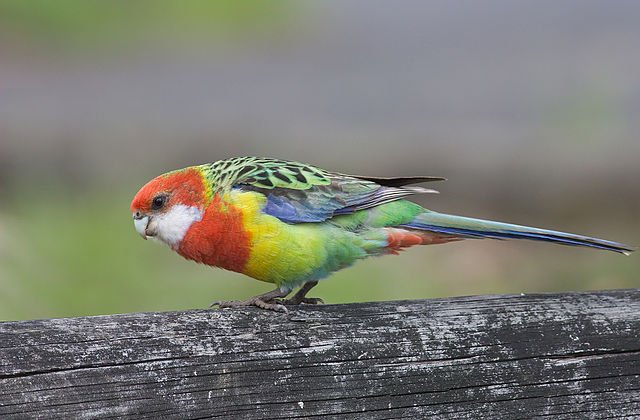Eastern rosellas are a beautiful type of parrot that is native to eastern Australia. They are relatively easy to breed and make great pets. If you’re thinking about breeding eastern rosellas, there are a few things you need to know first.
In this article, we’ll discuss what birds you need, how to set up their enclosure, and what to feed them. We also will touch on the nest boxes you need, nesting material, food for the adults, as well as the right type of nesting material.
This guide will provide you with all the tips and tricks you need to know about breeding eastern rosellas so that you can get started on your own breeding project today!
Eastern Rosella Breeding Basics – Things You Need To Know Before You Start
Eastern rosellas are relatively easy to care for, but there are a few things you need to know before you get started.
Eastern rosellas need a large cage or aviary
They are active birds and need plenty of space to move around.
You have a few options here: You can either keep them in a cage or aviary, or you can allow them to free-range. If you choose to keep them in a cage, make sure it is large enough for them to move around comfortably.
They also need a perch and some toys to keep them entertained. If you opt for an aviary, make sure it is well-ventilated and has plenty of space for them to fly around. You should also provide perches and toys for them to play with.

Whichever option you choose, just make sure your birds have enough space to move around and that they are safe from predators.
They need a healthy breeding diet that is high in fresh fruits and vegetables
A good diet for your Eastern rosella should consist of a variety of fruits and vegetables, as well as some pellets or seed mix. Fruits and vegetables can be fresh, frozen, or canned (without added sugar).
Some good fruits for your rosella include apples, bananas, pears, grapes, and melons.
Or choose from some vegetables like dark leafy greens, carrots, sweet potatoes, and squash.
You should also offer your rosella a few pellets or a seed mix that is specifically designed for parrots. These mixes usually contain a variety of seeds, grains, nuts, and dried fruits.
They can be noisy birds
One of the biggest challenges is their noise level. Rosellas are very vocal birds and their loud squawking can be a nuisance to neighbors.
So they may not be suitable for apartments or other close living quarters.
Eastern Rosella Breeding in Captivity- Picking the Perfect Pair
Consider the Color of Your Rosellas
If you are looking to breed your rosellas, you will need to consider the color of your birds. The most common colors are green and yellow, but there are also many other colors and mutations. You will want to choose a pair that is of the same color so that you can get the best results.
The Size of the Rosellas
One of the most important aspects you need to consider when choosing a pair of Eastern rosellas is their size. The male and female should be roughly the same size, as this will help ensure that they are able to mate successfully.
If one bird is significantly larger than the other, it is likely that they will not be able to mate properly, and this can lead to health problems for both birds.
The Age of the Rosellas
When choosing a pair of Eastern rosellas to breed, it is important to consider the age of the birds. Younger birds are more likely to be successful in breeding than older birds.
Birds that are two years old or younger are typically the best choice for breeding. Birds that are three years old can also be successful, but their chances are not as high as younger birds. Birds that are four years old or older typically have a very low success rate when breeding.
Therefore, it is best to choose a pair of rosellas that are two years old or younger for the best chance of success.
Gender Difference of the Rosellas
As with most animals, there are some subtle physical differences between the male and females of the species. However, with birds, these differences can be quite hard to spot unless you know what you are looking for.
The easiest way to tell the difference between a male and female Eastern Rosella is by looking at the cere, which is the fleshy area above the beak. The male has a bluish-purple cere, while the female has a brownish-pink cere.
Another way to tell the difference is by looking at the tail feathers. The male has longer and more pointed tail feathers than the female. Read More about Eastern Rosella gender difference here.
Step-by-Step Guide To Finding the Best Nesting Box for Your Eastern Rosellas
The size of the box is important, as is the type of material it’s made from. You’ll also want to make sure the box has good ventilation and is easy to clean. Follow the steps below to find the perfect nesting box for your Eastern Rosellas!
Have the right dimensions
To find the best nesting box for your Eastern Rosellas, you need to know the right dimensions.
Most common for Eastern Rosellas are nesting boxes that are around 10 inches (260mm) deep, 8-10 inches (200-230mm) wide, and around 19 inches (470mm) in height.

Look for one that is made of sturdy materials and has a smooth interior. The box should also be large enough for your birds to move around comfortably and should provide climbing grooves on the front side all the way from the entrance hole down to the ground.
Consider the materials of the nesting box
The best nesting boxes for Eastern Rosellas are made of sturdy materials that will not rot or disintegrate easily. The box should also be weatherproof so that it can withstand the elements.
The nesting box should also be large enough for the bird to move around comfortably. The entrance hole should be just large enough for the bird to enter and exit easily.
You can find nesting boxes made of different materials, such as wood, metal, or plastic. But best, of course, are boxes made of durable wood.
Choose a nesting box with the right entry hole size
The hole size is important for two reasons. The first reason is that the hole needs to be big enough for your bird to comfortably enter and exit the box. If the hole is too small, your bird may have difficulty getting in and out, which can lead to frustration and potential injury.
The second reason is that the hole size will determine how much heat is retained inside the nest. A smaller hole will keep more heat in, which can be beneficial in cooler weather. Conversely, a larger hole will allow more heat to escape, which can be beneficial in warmer weather.
So depending on the size of your birds, the entrance hole should be 2.5-3 inches in diameter.
Consider the location of the nesting box
The location of the nesting box is important for two reasons. First, you want to make sure the box is in a location that is safe from predators.
Second, you want to make sure the box is in a location that is convenient for you to check on the eggs and chicks. If the nesting box is too high up, it may be difficult for you to check on them regularly. And of course, if the nesting box is too low to the ground, it may be easier for predators to get to the eggs and chicks. Although in a closed cage or aviary that may not really be a thread.
Have the correct nesting material
Nesting material is important for Eastern Rosellas, as they will use it to line their nest. Eastern rosellas will use a variety of materials, but the most important thing is that it is soft and absorbent. Some good options include shredded paper, cotton wool, or even toilet paper.
A great guide to the ideal nest box for Eastern Rosella you can find here: https://nestboxtales.com/nest-box-designs/eastern-rosella/
Eastern Rosella Breeding in Captivity- Incubating & Hatching Eggs
Eastern Rosella breading season in wild is spring, but in captivity they can be bred year around.
One of the challenges of breeding Rosellas is that they are very sensitive to incorrect incubation and hand-rearing techniques. If they are not incubated and reared correctly, they can develop a number of health problems.
Some of these problems include respiratory infections, malnutrition, and deformities. Because of this, it is important to make sure that you are using the correct techniques when you are breeding Rosellas.
The challenges of breeding Rosellas are many and varied. They include finding a compatible mate, providing adequate housing and nesting materials, preventing inbreeding, dealing with health issues, and so forth.
However, the rewards of successfully breeding these beautiful birds are great, and the challenges can be overcome with careful planning and dedication. With a little knowledge and effort, anyone can be a successful Rosella breeder!





